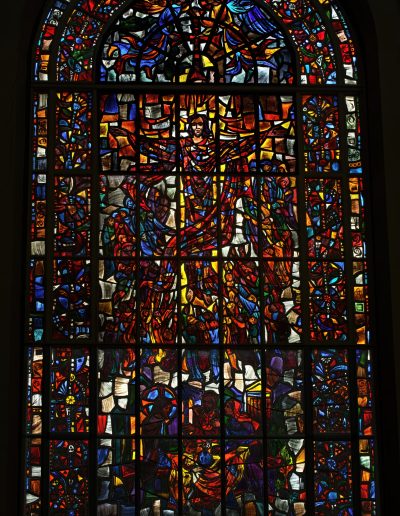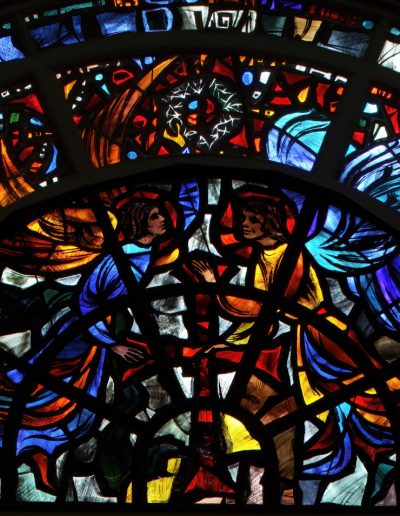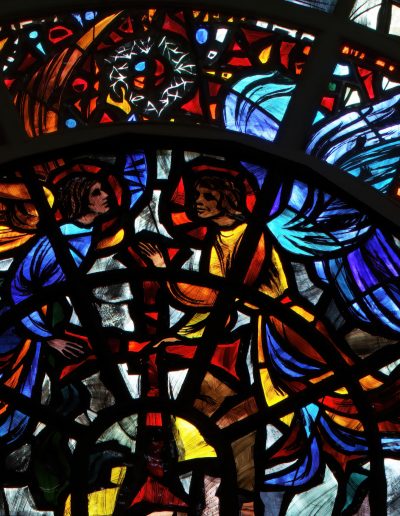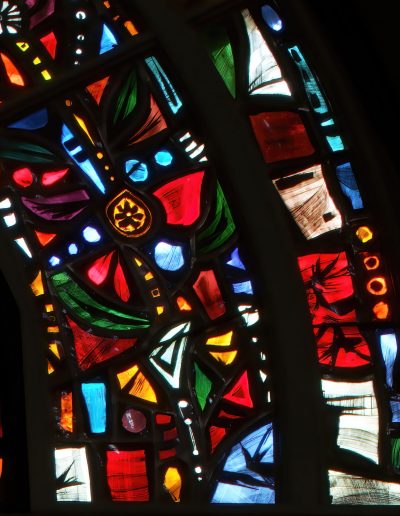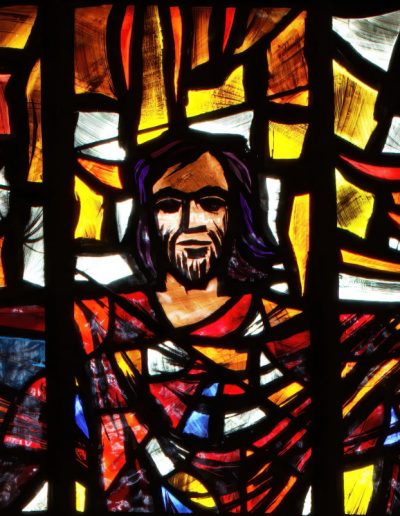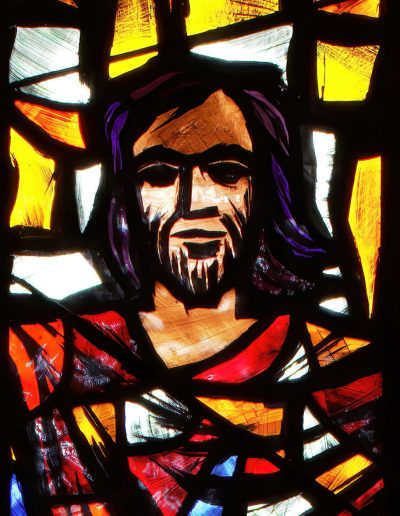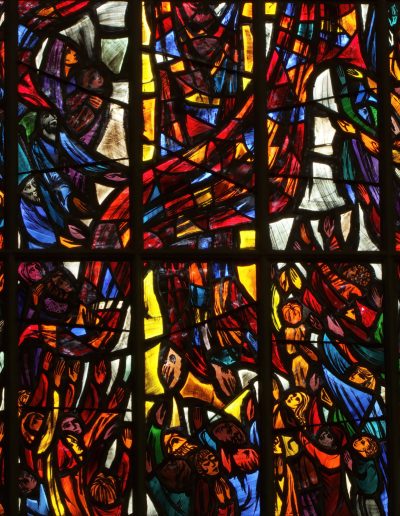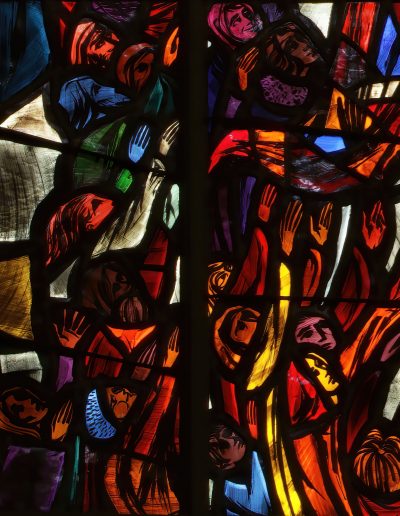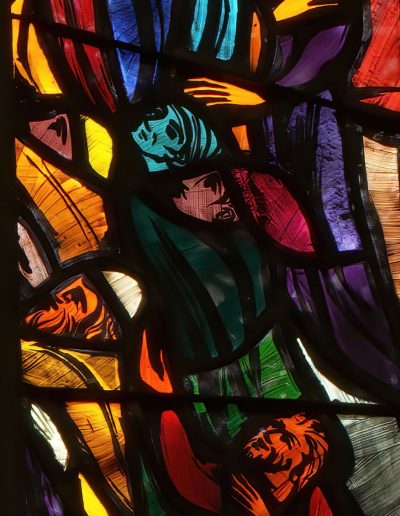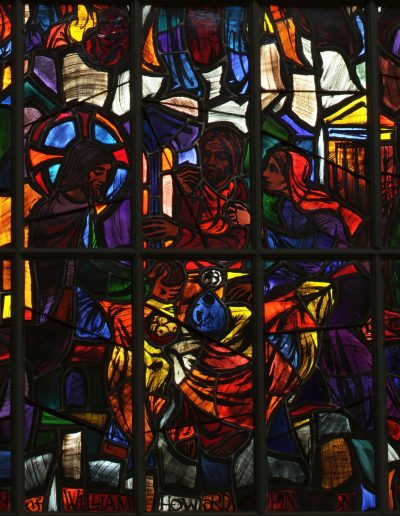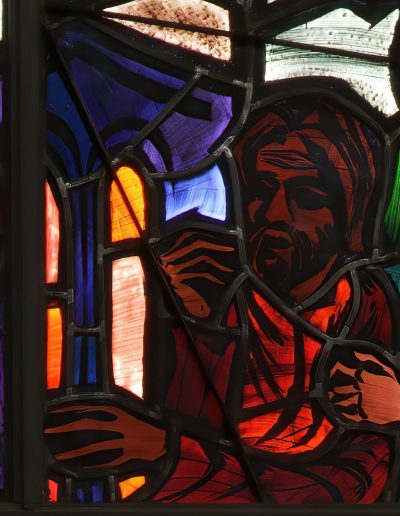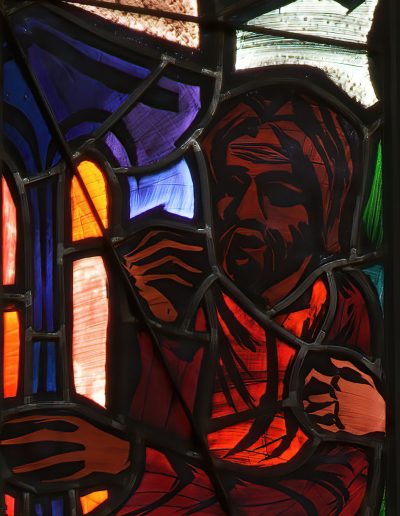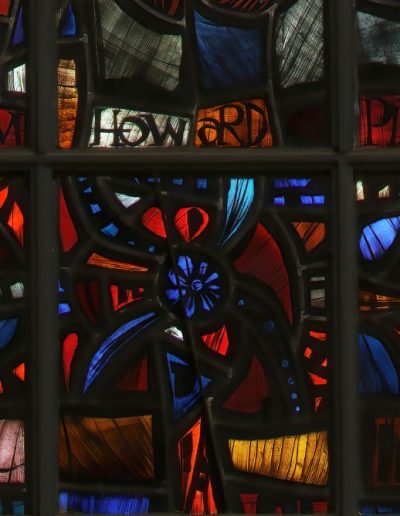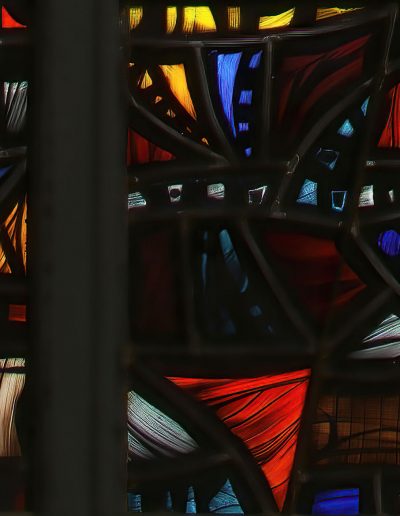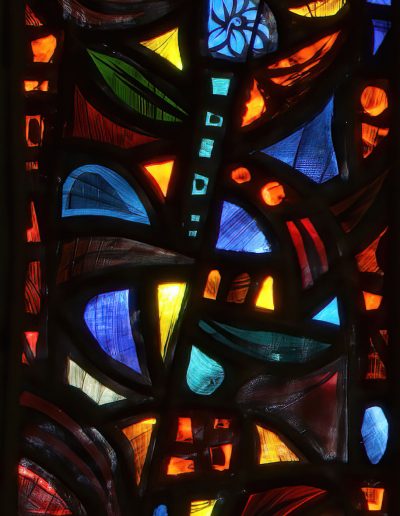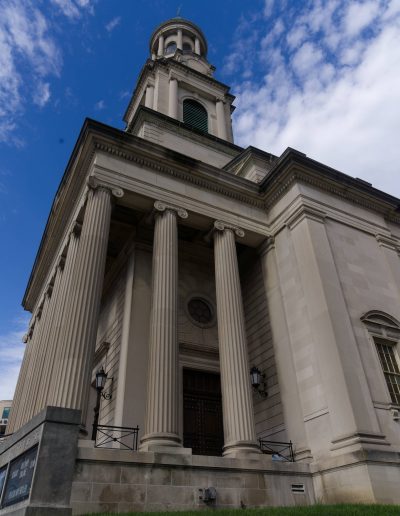Photo – Peter Swanson
Supper At Emmaus
1960 – National City Church, Washington, DC
This is a massive window, and it is massively complex. The window is about 20 feet high and 10 feet across and has thousands of pieces of glass in it. Each of these pieces has some shading and crosshatching that create an overall texture of the window. The whole window is framed by a border that has one thin row of glass beads that Rowan often used, one thicker row of intricate, mostly rectangular shapes with designs painted on them, and one even wider row of characteristic ornamental designs. Around the figure of the risen Christ there is a large crowd of people, and each one has character and expression. The long flowing robe that adorns Christ must have well over a hundred pieces of glass in it. The more you study this window, the more you appreciate its complexity.
There is a story related to this window that involves another famous artist: At the time that Rowan and Irene were working on this window, Norman Rockwell was painting a cover for the Saturday Evening Post that depicted a stained glass repairman he had seen in Westminster Abbey on a trip to England. Rockwell was having trouble getting the luminosity of the glass right, so he consulted Rowan and Irene for advice. They sent Rockwell a cartoon of the window they were working on at the time, which was this window at National City Church. The design in Rockwell’s painting is based on Rowan and Irene’s window, but the focus in his painting is only on the upper detail of the angels lifting the cross and not on the majority of the stained glass window. Rowan actually posed for Rockwell’s painting for the magazine cover and is credited as the model for the repairman in the painting. If you visit the page for this painting in the Norman Rockwell Museum’s website, at the bottom of the web page you will find photos of Rowan posing for Rockwell’s painting:
Norman Rockwell Museum Link
Iconography
The main portion of this huge and elaborate window shows the risen Christ surmounted by two angels together holding a simple cross, with one angel also supporting a crown of thorns like a triumphal laurel wreath above the cross. The mark of the crucifixion nails can plainly be seen in Christ’s left hand and right foot, and Christ himself is surrounded by a multitude of people, both men and women, many of whom are reaching out to him with their arms. This picture recalls St. Paul recounting in I Corinthians (15:3-8) the appearance of the resurrected Christ to “more than five hundred brothers and sisters at one time” and eventually to Paul himself.
This smaller scene at the bottom of the window presents a more intimate appearance of the risen Christ–in this case to two people. The subject here is the Supper at Emmaus, during which two of Jesus’ disciples finally recognize him as he shares a meal with them. Caravaggio’s two well known paintings of this supper (1601 and 1606), like many traditional depictions of the event, show the risen Christ appearing to two men, the disciples Luke and Cleopas.
However, in the Gospel story (Luke 24:13-32), only one of the two, Cleopas, is actually identified in any way; it is not even clear from the text whether the other person is male or female. Earlier in the day, Jesus had traveled and conversed, unrecognized, with these two people; later, they invited him to share supper with them. As Jesus broke and blessed the bread at that supper, their eyes were opened, and they recognized him as the risen Christ.
In recent times, some Biblical scholars have suggested that this third unnamed person with Cleopas and Jesus is actually a woman, Cleopas’s wife Mary, and a number of contemporary artists have pictured Jesus breaking bread with a man and a woman. Rowan and Irene seem to have agreed with this more recent view. Here, in their window, a woman sits at the table with Jesus and Cleopas. It is interesting that later in their careers, in one of the magnificent mosaics that they completed for crypt of the National Cathedral (1970), Irene and Rowan again depicted a woman walking with Cleopas and Jesus at the bottom of the mosaic, as well as sharing a meal with the two men at the top of the same mosaic. There are good pictures of this National Cathedral mosaic by Irene and Rowan in an article from Art &Theology:
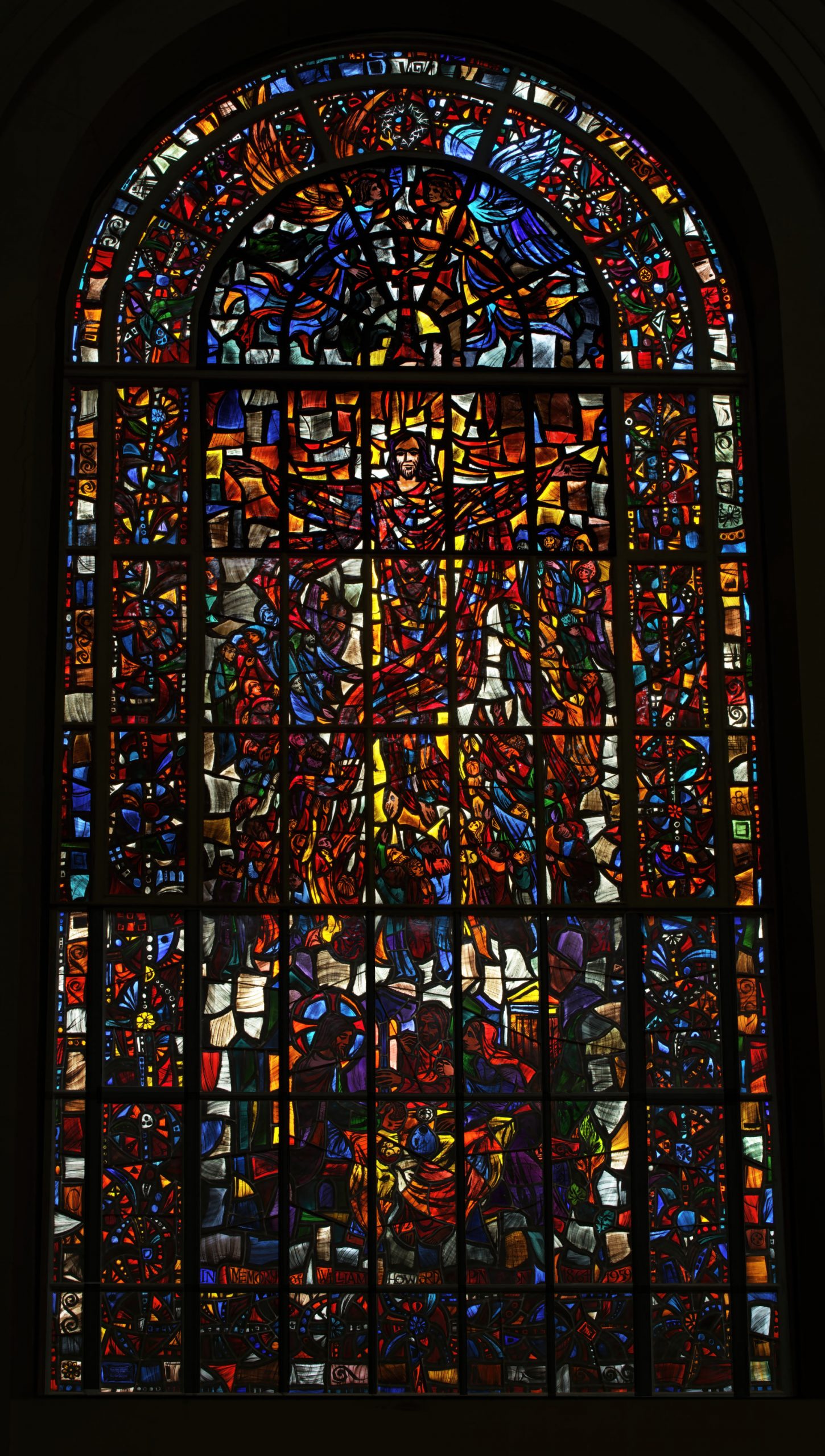
Photo – Peter Swanson
Window Details
Click on an image to see it full size.
Window Details
Year Completed
1960
Artists
Rowan LeCompte
Irene Matz LeCompte
Fabricator
Rowan LeCompte
Irene Matz LeCompte
Location In Building
South Wall Near Crossing
To learn more about Rowan and stained glass vist our DVD store.
Dimensions
20 feet x 10 feet
Address
5 Thomas Cir NW
Washington, DC 20005
Produced By:
Global Visions & Associates, Inc.
www.globalviz.com
More Information
More information will be forthcoming as the site develops.
